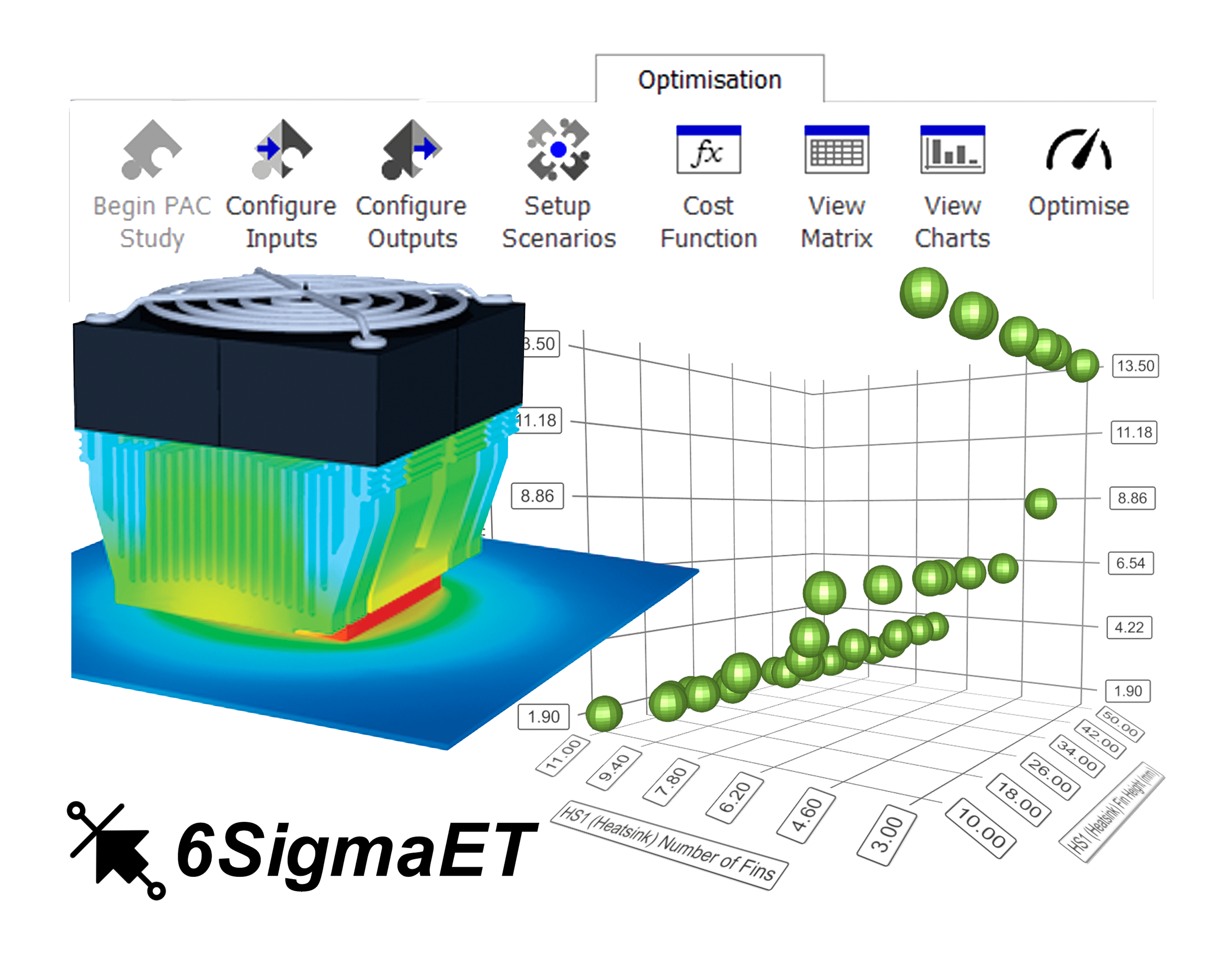With every major release of 6SigmaET, which is released on the market every 9-12 months, one of the manufacturer’s main focuses is on increasing speed. This focus was of course not ignored in release 14. Be it faster graphics processing when displaying many small fully shaded elements in the model or with regard to e-mobility, the multi-core extension for temperature-dependent Joule calculations of current-loaded conductor structures. 6SigmaET is an engineering tool for practical use, which also generates plausible CFD results in very short modeling and calculation times.
A special highlight is the newly integrated “Optimizer”. While previously tabular parameter studies were possible, a target parameter can now be defined by a value or function using a “design-of-experiment method”. 6SigmaET creates a matrix based on the variables provided, such as the number of fins, fin geometry or gap distance for a heat sink, which automatically plans the next optimization step ahead during the optimization calculation.

- Fluid cooler: The volume flow of pumps can now be controlled
- New possibilities to specify the time grid for transient calculations
- New physical replacement object for battery cells to simulate battery packs
- Input of predefined heat transfer coefficients or contact resistances possible
- ODB++ and IPC2581 interface is now integrated in 6SigmaET free of charge
- ASCII-ECXML interface further improved for models, components and assemblies.
- Improved thermal radiation calculation for 2R components
- and much more besides

